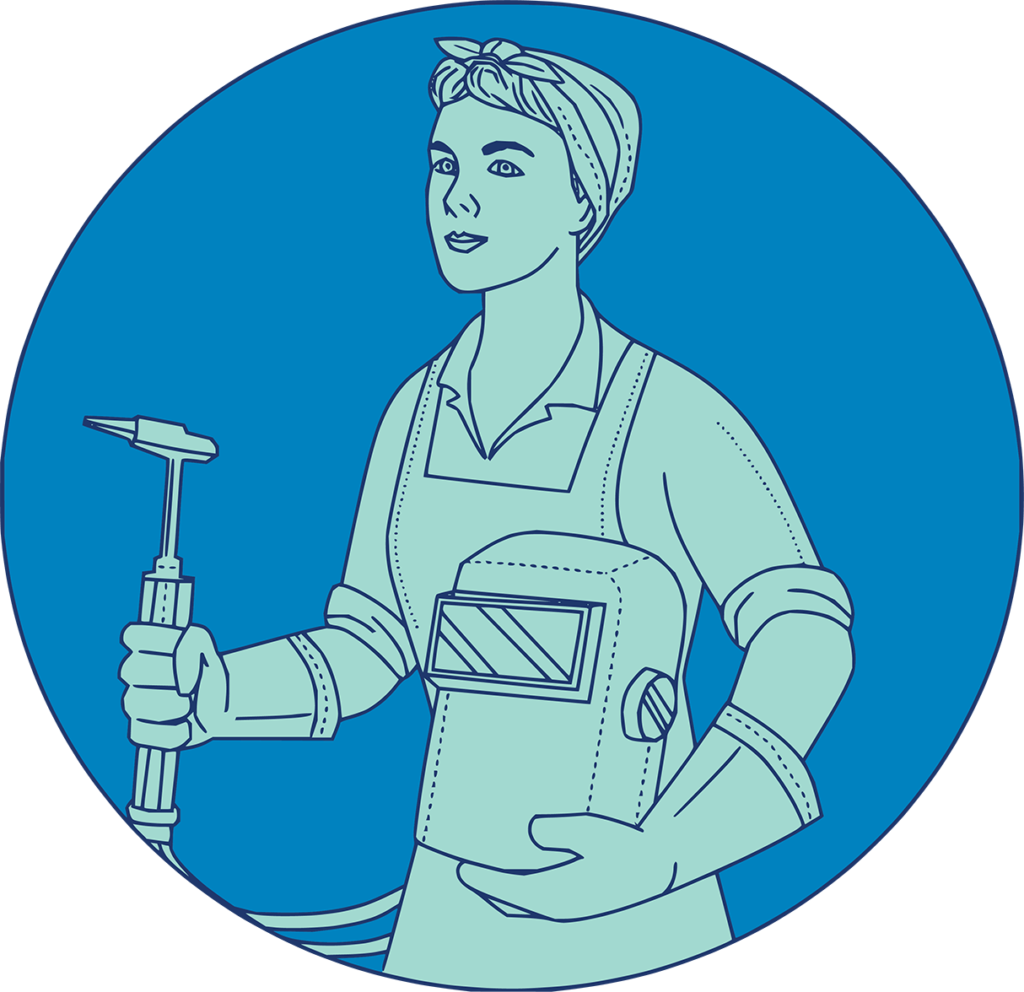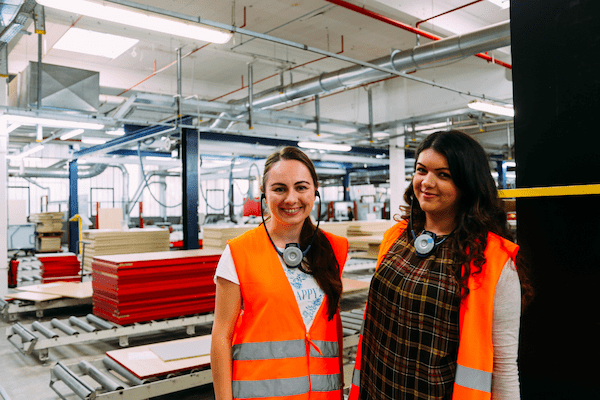

The times they are a-changin’.
Bob Dylan’s famous song from 1964 is still as relevant today as it was during the cultural revolution that represented the largest generational values shift in our history.
In those days, women were celebrating the Equal Pay Act, reading Betty Friedan, and breaking the mold of the stereotypical housewife to begin careers and live beyond the boundaries of domestic life.’
The History of Women in Manufacturing
The first time we saw the first big wave of women entering the workforce was during World War II. Many of the men went to war leaving a gigantic labor shortage and women stepped up.
By 1943 women actually made up 65% of the labor force and “Rosie the Riveter” was the face of the movement.
But as the war came to an end and the men came back needing jobs, women were expected to return to traditional roles.
The Data

Today, women are present in every aspect of our society. Instead of taking home economics in high school and becoming housewives shortly thereafter, the majority of women are seeking higher education and entering the workforce. They are waiting much longer to have children, prioritizing careers and self-fulfillment over starting a family.
Women overwhelmingly constitute the majority of:
- Preschool & Kindergarten Teachers
- Dental Hygienists & Assistants
- Speech-Language Pathologists
- Childcare Workers
- Secretaries and Administrative Assistants
- Medical Records & Health Information Technicians
- Dietitians & Nutritionists
- Hairdressers, Stylists, & Cosmetologists
- Medical Assistants
Data from the U.S. Bureau of Labor Statistics shows that women tend to pursue careers that have less strenuous conditions and a lower risk of injury. There are many reasons for this, including societal norms, barriers to entry, unappealing working conditions, and work/life balance.
In contrast, top careers for men include:
- Software Developers
- Farmers
- Construction Workers
- Financial Analysts
- Aerospace Engineers
- Clergy
- Television, Video, & Motion Picture Camera Operators and Editors
- Architects
- Aircraft Pilots & Flight Engineers
- Firefighters
This data tells us that men are more likely to pursue careers with an increased risk of injury and less desirable working conditions. Some women, however, are completely ignoring the metaphorical “Do Not Enter” signs by entering the trades; and they are succeeding.
So What Does This Mean For Women in Manufacturing?

It is estimated that only 5-7% of welders are female. Women represent 47% of the total US labor force. That means there is a pool of over 50 million working-age women who could fill the estimated 400,000 worker shortage in the welding industry by 2024.
With a significantly higher median wage than most traditionally female careers, this represents a win-win for the industry and women who want to boost their earnings, and don’t mind getting their hands dirty.
Employers overwhelmingly support an influx of women in the trades as it means a larger pool of available labor resources for them to meet their production goals. Tool, clothing, and safety equipment manufacturers are responding with products designed for those of smaller stature.
If the labor market continues to solicit female trade workers and update working conditions and structures to accommodate women, the result will be a boom in construction and manufacturing output we haven’t seen in decades. Simultaneously, higher wages for female earners cannot be ignored, as their purchasing power will have a ripple effect across consumer goods, retail, and other markets where spend dictates what products are offered.
Change is inevitable. If more women are willing to pursue a career in the trades, they can save manufacturing.
Women Currently Making Great Strides
Speaking of change, there are women currently in the manufacturing industry who are bringing attention to the possibilities for women in manufacturing.
For example, Jessi Combs, the “Fastest Woman On Earth.” Jessie was known for being a television and offroad racing star and was a role model for women in the industry.
Since then many more women have become well-known in the manufacturing and welding industry like Barbie the Welder and Samantha Farr.
Supporting Women in Manufacturing
So what can organizations do about the lack of women in welding?
Consider the steps your organization is taking to break down barriers, from creating a culture that is welcoming to changing hiring practices.
Additionally increasing focus on vocational programs, educator training, apprenticeship programs, and scholarships for women can attract them to the welding profession. One amazing resource is Women Who Weld which offers programs and support for women in the industry.
We are already seeing how STEM classes being offered to girls in middle and high school can help open their eyes to opportunities in the welding industry that they may have never considered.
If we can create an environment that not only welcomes but encourages women in welding, we can fill the shortage and save the industry.
Are you a woman in the manufacturing industry? We have high-quality products to help save you money. Whether you’re looking to do business with us or you need assistance, we’re here to help. Let’s chat!
Sign up for our Monthly Newsletter
Join our community of over 20,000 industry experts and subscribe to our newsletters to receive product announcements and offers.